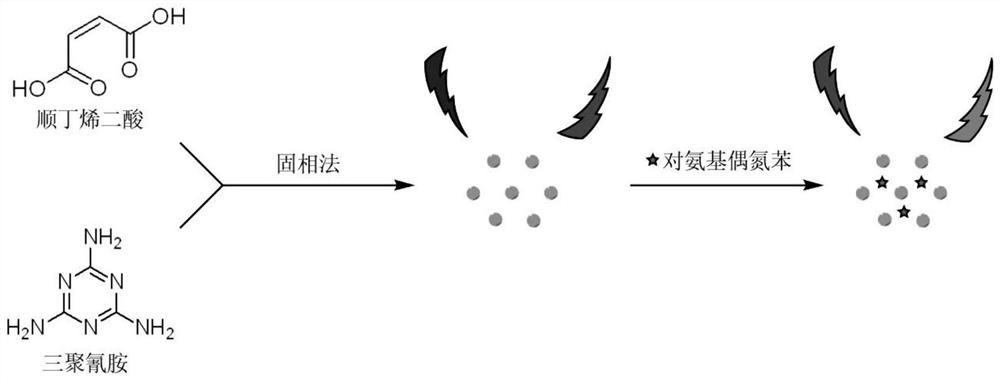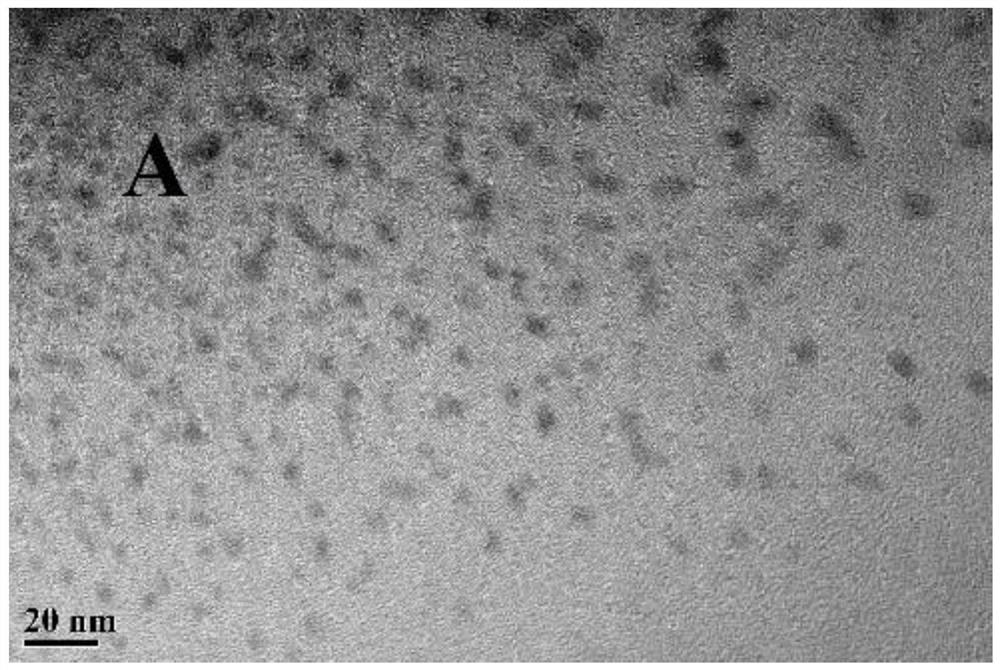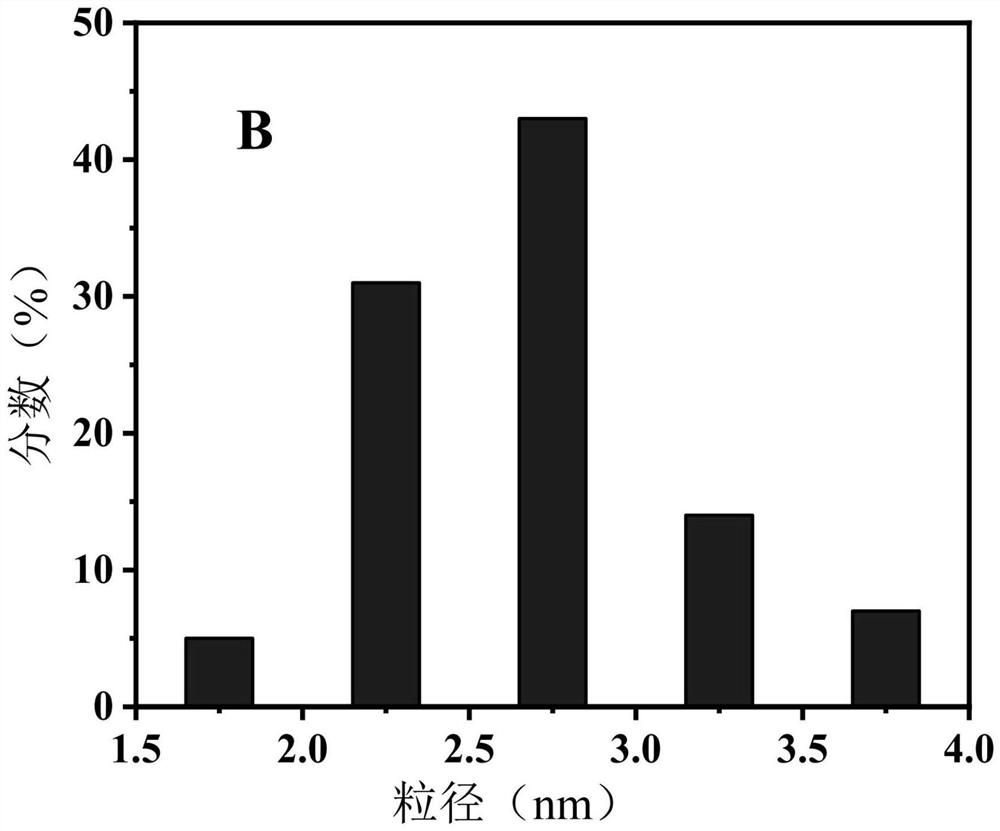Fluorescent carbon dot and its preparation method and application in detecting p-aminoazobenzene
A technology of p-aminoazobenzene and fluorescent carbon dots, which is applied in the direction of fluorescence/phosphorescence, chemical instruments and methods, nano-carbon, etc., can solve the problems of complex and toxic synthesis steps, and achieve low detection cost, high sensitivity and selectivity Good results
- Summary
- Abstract
- Description
- Claims
- Application Information
AI Technical Summary
Problems solved by technology
Method used
Image
Examples
Embodiment 1
[0053] The preparation of embodiment 1 fluorescent carbon dots (CDs)
[0054] This embodiment provides a preparation method of fluorescent carbon dots (CDs), the schematic diagram is as follows figure 1 As shown, it specifically includes the following steps:
[0055] Maleic acid and melamine were used to prepare carbon dots by solid-phase synthesis. Specifically:
[0056] First, maleic acid and melamine in molar ratios of 1:1, 1:2, 2:1, 3:1, 1:3 were mixed and transferred separately into 50 mL autoclaves lined with Teflon , Heated at 200°C for 5h in a blast drying oven. After the reaction, it was naturally cooled to room temperature. Remove large particles by centrifugation (6500rpm, 10min), and filter the dark brown supernatant obtained by centrifugation with a 0.22 μm microporous membrane, then dialyze the filtrate with a dialysis bag (molecular weight cut-off: 500Da) for 24 hours, and collect the solution in the dialysis bag , and after drying in an oven, fluorescent c...
Embodiment 2
[0059] Embodiment 2: the method for laboratory simulation detection p-aminoazobenzene (PAAB) in environmental water
[0060] The fluorescent carbon dot (CDs) solution prepared in the above-mentioned embodiment 1 is added in the PAAB solution of different concentration, carries out fluorescence quenching reaction, schematic diagram is as follows figure 1 As shown, according to the linear relationship between the detected fluorescence intensity change and the concentration of p-aminoazobenzene, a standard curve was established;
[0061] Add the fluorescent carbon dot solution to the environmental water body to be tested for fluorescence quenching reaction to obtain the change of fluorescence intensity;
[0062] The concentration of p-aminoazobenzene in the environmental water body to be tested is calculated by the standard curve.
[0063] In this example, different carbon dot concentrations, reaction times and pH values of the reaction system were studied to obtain the charac...
Embodiment 3
[0098] Example 3 Fluorescent carbon dots detect p-aminoazobenzene in actual water samples
[0099] To further investigate the high sensitivity and selectivity of this method for PAAB, the fluorescent carbon dots were evaluated using actual water samples. Four actual water samples taken from Yuyuantan Park, Binhe Park, Shichahai and Chaoyang Park. These actual water samples were first filtered using a 0.22 μm microporous membrane, and then the actual water samples were analyzed and the spike recovery was studied. The experimental results are shown in Table 1, and Table 1 is the experimental data after treatment of the actual water sample spiked.
[0100] Table 1:
[0101]
[0102] From the experimental results in Table 1, it can be seen that the standard addition recovery rate is 92.2% to 105.6%, and the relative standard deviation is between 1.38% and 4.27%, indicating that the fluorescent carbon dots can detect PAAB sensitively. It has certain application potential in d...
PUM
| Property | Measurement | Unit |
|---|---|---|
| pore size | aaaaa | aaaaa |
| concentration | aaaaa | aaaaa |
| particle diameter | aaaaa | aaaaa |
Abstract
Description
Claims
Application Information
 Login to View More
Login to View More - Generate Ideas
- Intellectual Property
- Life Sciences
- Materials
- Tech Scout
- Unparalleled Data Quality
- Higher Quality Content
- 60% Fewer Hallucinations
Browse by: Latest US Patents, China's latest patents, Technical Efficacy Thesaurus, Application Domain, Technology Topic, Popular Technical Reports.
© 2025 PatSnap. All rights reserved.Legal|Privacy policy|Modern Slavery Act Transparency Statement|Sitemap|About US| Contact US: help@patsnap.com



